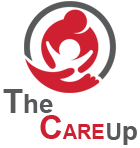Sleep-wakefulness disorder, also know as narcolepsy, is often not properly diagnosed or is frequently overlook among children. The three-pronged approach to treatment includes medication, lifestyle changes (eating, drinking, eating and sleeping strategies), as well as instructing teachers, coaches, and other professionals on the negative effects of this condition on the child’s capacity to perform.
What exactly is narcolepsy?
Narcolepsy is a neural (nervous system) disorder that alters your brain’s capacity to manage awakenings and sleep. Children with narcolepsy experience excessive amounts of sleep, which impacts all aspects of their lives, including social activities and school performance.
Children with the disorder of narcolepsy have a
- Constant excessive daytime sleepiness.
- The never-ending struggle to stay awake
- Sleep episodes, which are sudden and unplanned (“sleep episodes”), are possible to occur during any event and at any point throughout the day.
Who is affect by Narcolepsy?
The condition isn’t well identify and is frequently wrongly diagnose in children, which makes it difficult to determine the percentage of children affect by the disorder. Narcolepsy affects one out of per 100,000 children, according to one estimate. The signs of narcolepsy are know to have been identify as early as the age of 5 or 6 years old. The condition, however, is generally not diagnose until the late years of adolescence. It is a frequent affliction of both boys and girls.
Is Narcolepsy Different for Children?
There is a great deal of overlap in the signs and symptoms of narcolepsy among adult and child patients. There are some important distinctions.
EDS in children tends to manifest as restlessness or anger. 7. This can be misinterpret as a behavior issue. Children suffering from narcolepsy may have a tendency to sleep longer at night and could be more active during their sleep.
Cataplexy may be less obvious when it is present in children than in adults, but it’s still present in up to 90% of cases. Cataplexy is more prevalent in the face than in the body. It is also know as “the facial tics.” The symptoms of cataplexy in children may change into their more traditional shape as time passes.
Signs and symptoms of narcolepsy
The signs of wakefulness can lead to noticeable items at night as well as during the daytime. The most commonly reported symptoms are:
- Excessive Daytime Sleepiness (EDS): EDS is the most prevalent sign of narcolepsy, affecting all people suffering from the disorder. Narcolepsy can trigger “sleep attacks,” which are unintentional, unpredictable, uncontrollable slumbers.
- The inability to sleep can lead to automatic behaviors, even if the person isn’t conscious of them. Students may have been writing during class, but they’re really simply writing gibberish or lines of text.
- Disrupting the night’s sleep Narcolepsy sufferers might wake up several times throughout the night. Sleep disorders like excessive body movements or sleep apnea are more frequent for narcoleptics.
- Vibrant imagery can occur during sleep (hypnagogic hallucinations) or after you awake (hypnopompic paranoia).
- Caplexy is the unexpectedly loss of muscle control. Cataplexy can be provoke by positive feelings such as laughter or joy. Certain people suffering from NT1 might only experience cataplexy occasionally throughout the season, while others may experience a multitude of episodes per day.
EDS is a common affliction for those suffering from narcolepsy. But, only a quarter of people with EDS suffer from all of the symptoms. Cataplexy may develop for a long time after a person has been identify with EDS.
Narcolepsy Diagnostic Criteria for Treatment
To diagnose sleep disorders, doctors utilise standardised criteria. Standardisation will aid in the identification and treatment of hypersomnia, NT1 or NT2, along with other conditions that could be the cause of EDS.
The two, NT1 and NT2, both require significant EDS that last at least 3 months. Patients must not have low levels of hypocretin in their cerebrospinal fluid or have cataplexy. They should be able to quickly get to sleep and then reach REM sleep with the MSLT.
It may be difficult to recognise other sleep disorders that exhibit similar symptoms to NT2. The croaker must carefully review the symptoms and results of the situation to determine if there are any other issues.
Children treated for narcolepsy
Medical Information
While behavioural therapies can be beneficial, many sufferers with narcolepsy seek treatment to control some or all of their symptoms.
Although narcolepsy medications can assist in reducing symptoms, they could be at a risk for adverse side effects. They require a prescription from a doctor. They should only be use according to the instructions of a physician or pharmacist.
The most frequently prescribed drugs for narcolepsy include:
- Modafinil and armodafinil are two chemically identical wakefulness-promoting medications that are commonly use as first-line treatments for EDS. Modalert 200 and Modvigil 200 is include in this category of medicine.
- Methylphenidate The type of amphetamine may decrease EDS.
- It has been show to have the same effects on EDS as modafinil (Modalert or Modvigil).
- While this medicine may help with cataplexy and other night-time sleep disturbances, EDS-22 may take some time to reply.
- Pitolisant: Pitolisant is a wakefulness-promoting drug that has also been shown to aid in the treatment of cataplexy. In the year 2019, the FDA approved it.
Certain medications might not be suitable for all. Patients may experience adverse reactions as well as interactions that are intense when they take other medications. Working with your doctor to determine the right dosage for your medication and balance the positives and drawbacks is crucial. Modalert 200 Australia by using our online pharmacy for an affordable price.
 The Care Up
The Care Up




